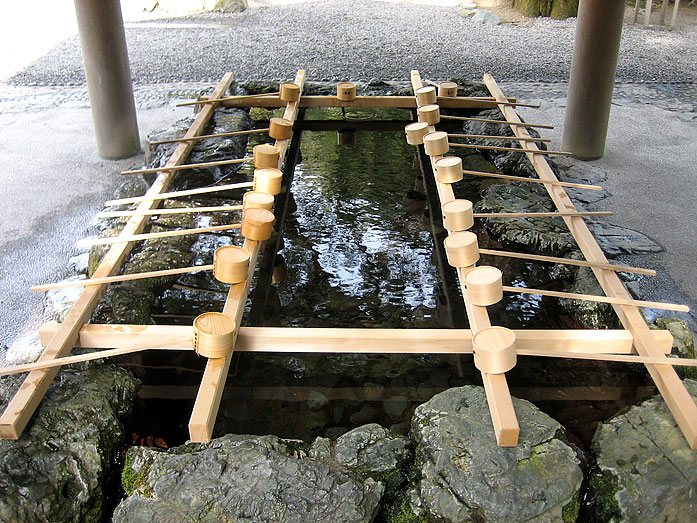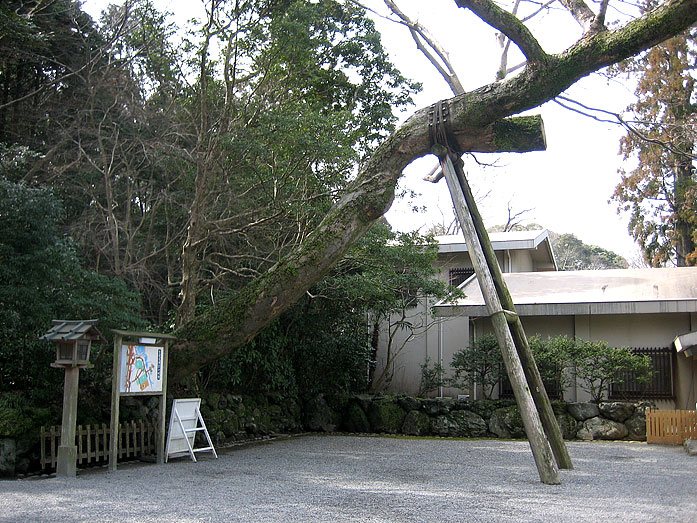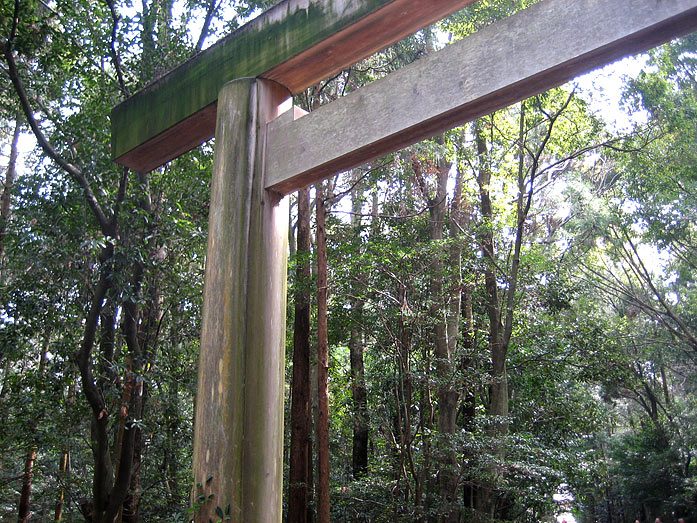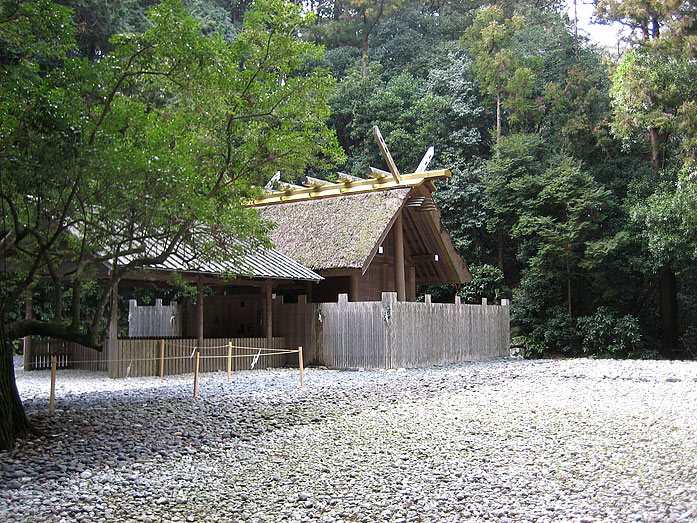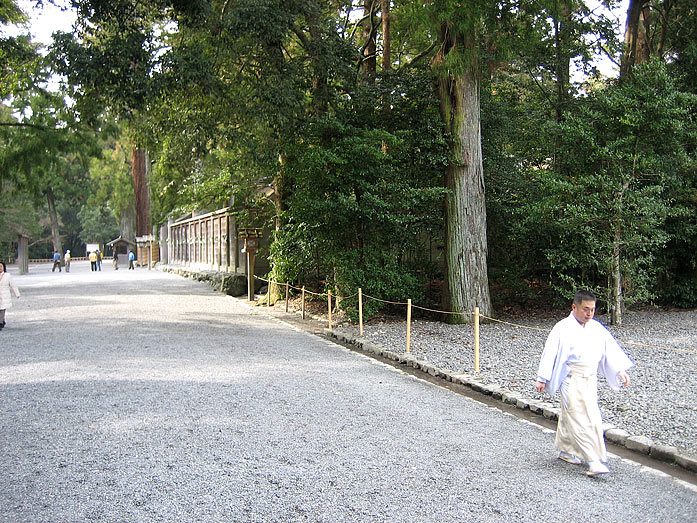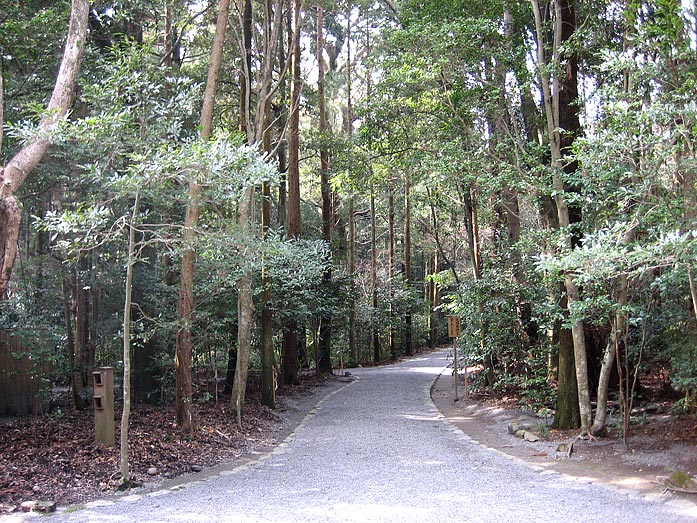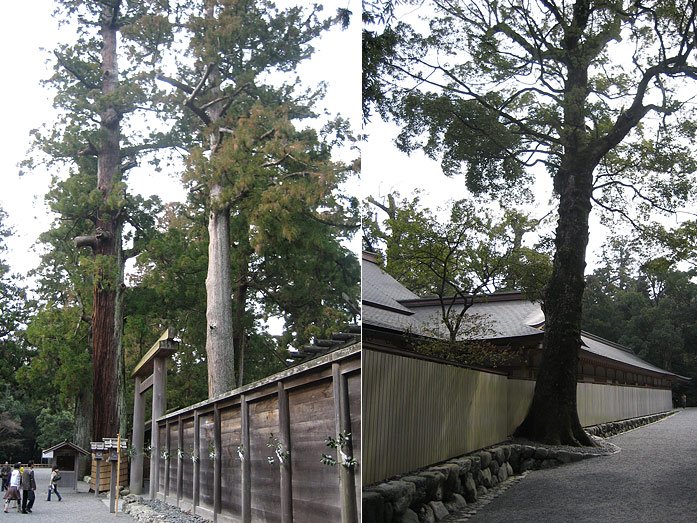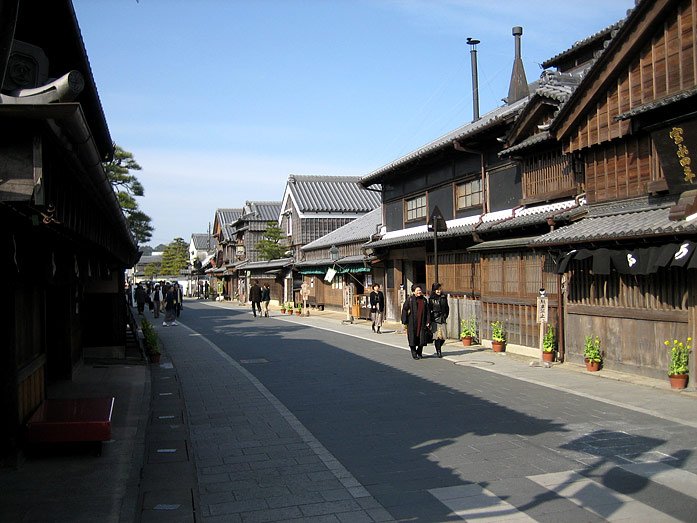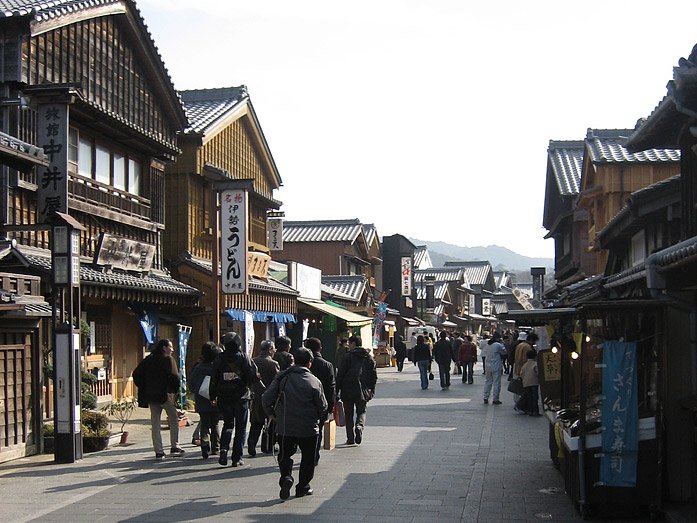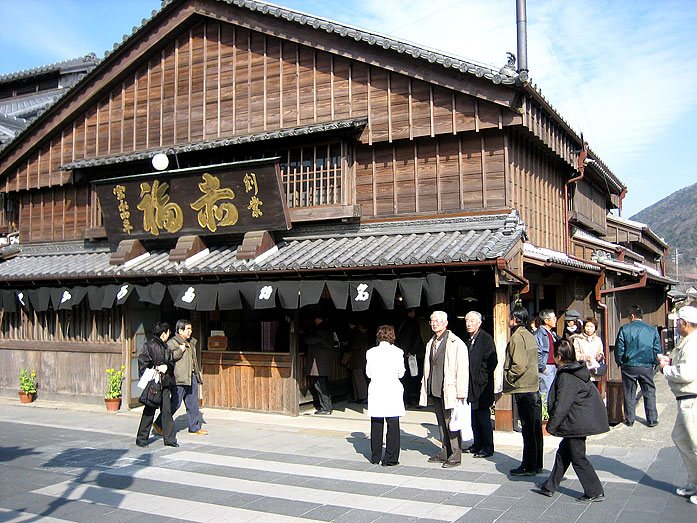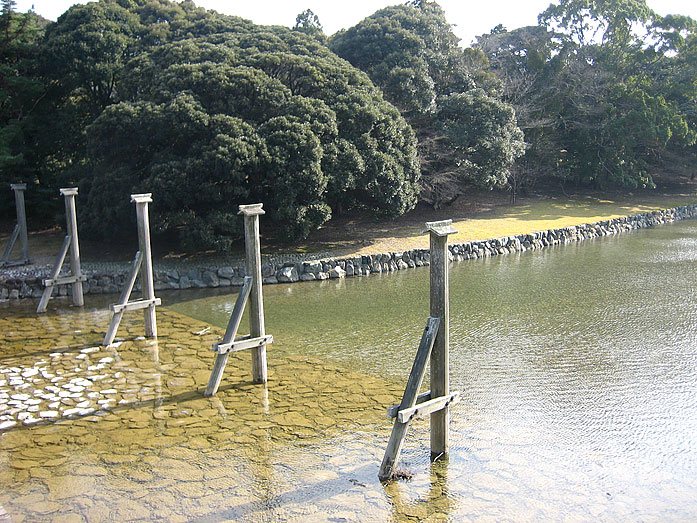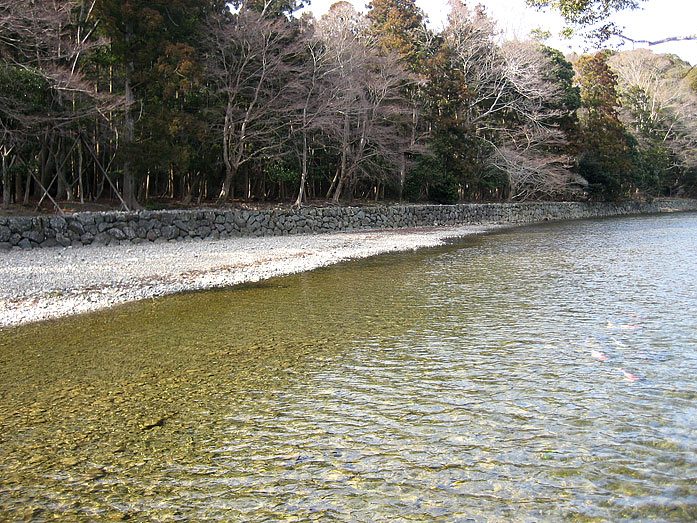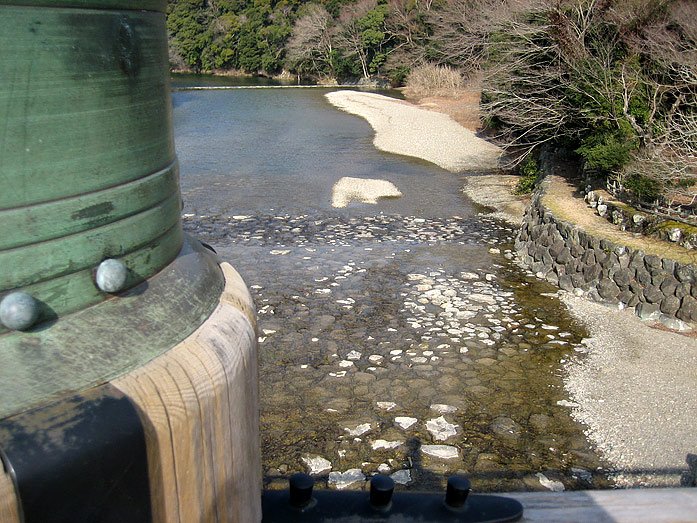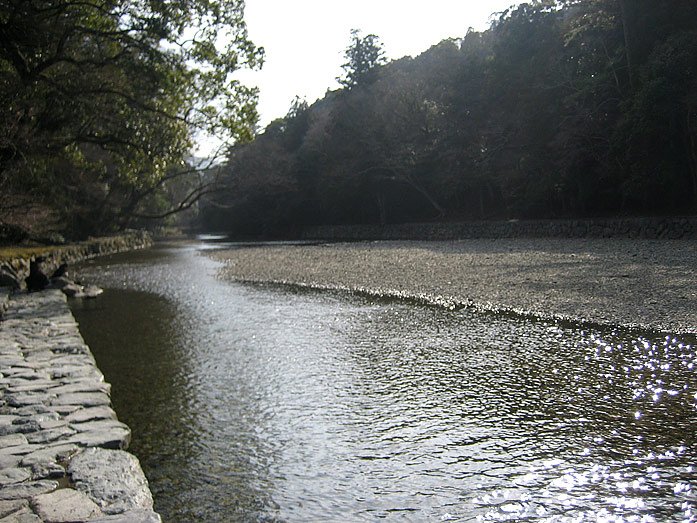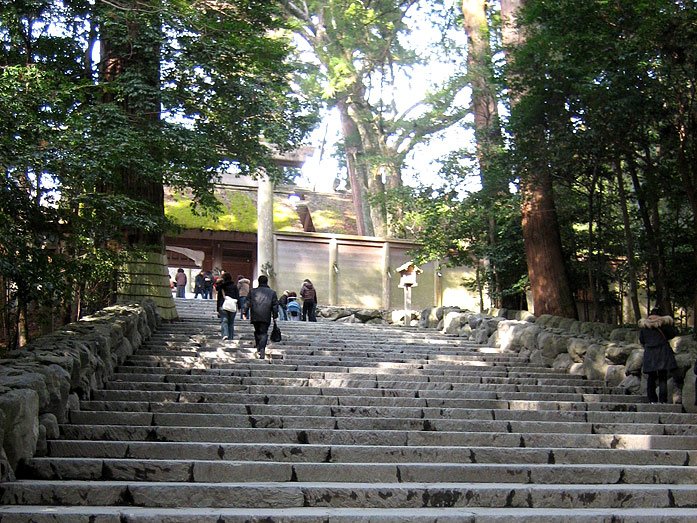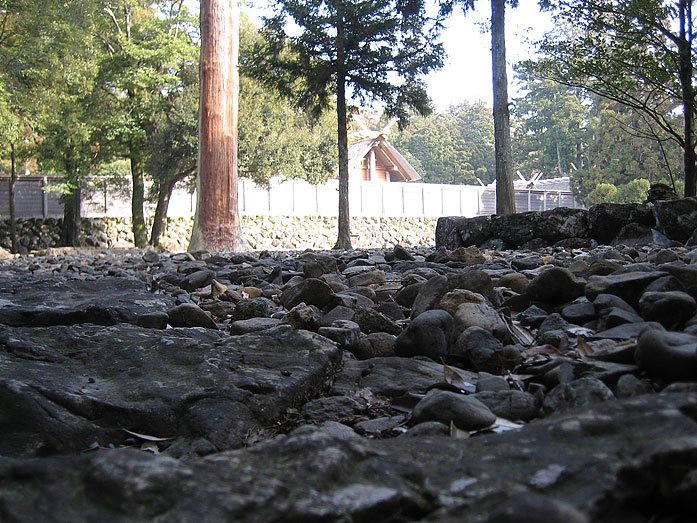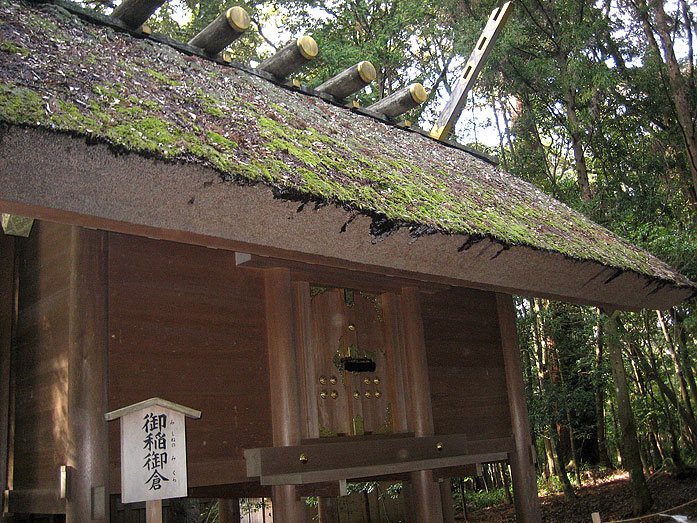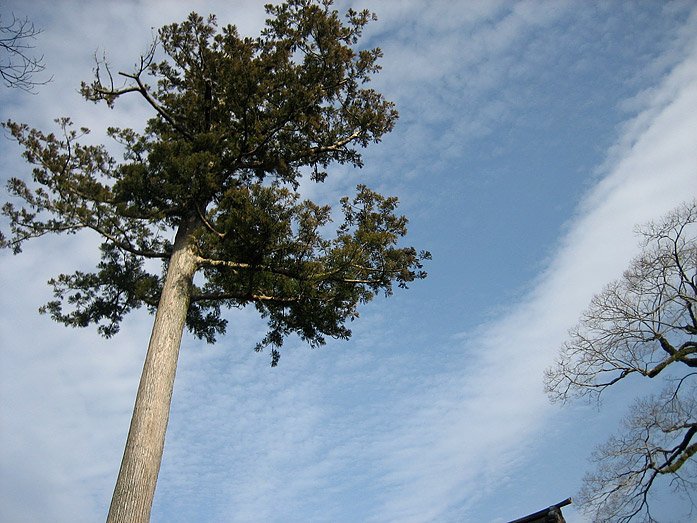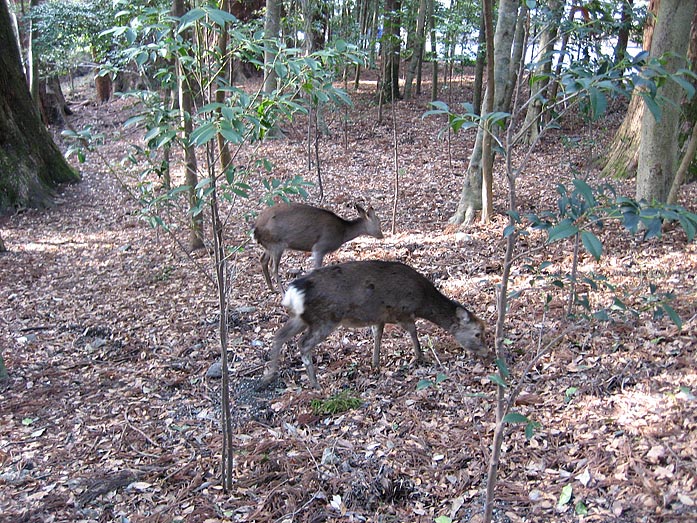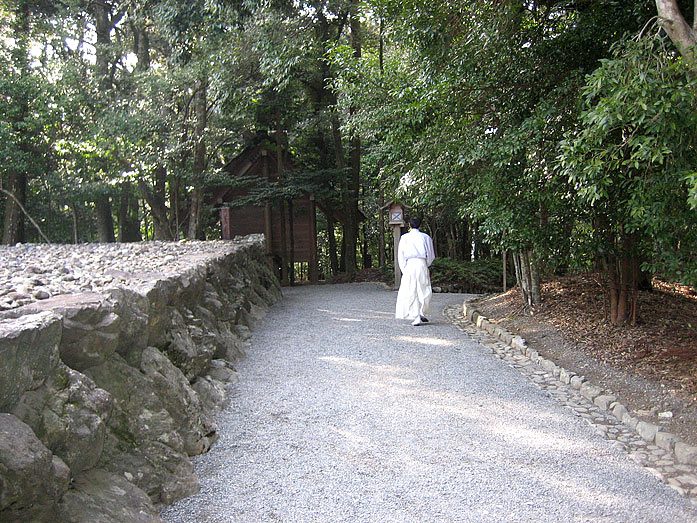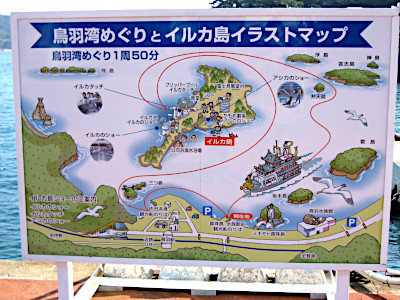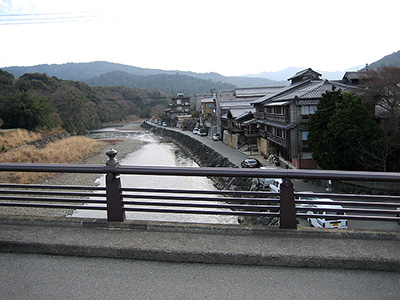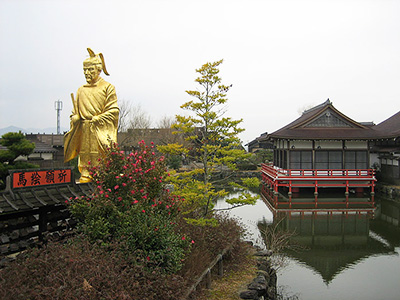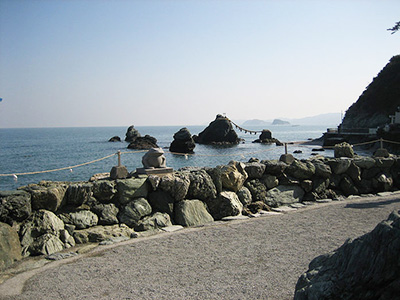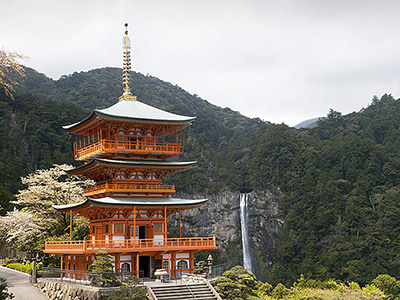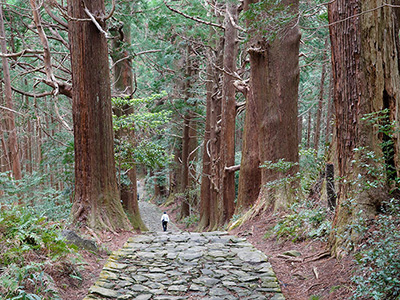Ise Shrine (Ise Jingu) in Ise city
This post can contain affiliate links, which means that we may receive a small commission if you make a purchase using these links.
Facts & Figures
The Ise Grand Shrine or Ise-jingu is the most sacred Shinto Shrine complex in Japan. In total 125 buildings belong to the shrine. It is located near the city Ise. The shrine is separated in two parts the Naiku or Kotai Jingū (Inner Shrine) and Geku or Toyouke Daijingu (Outer Shrine). At Naiku the ancestral kami or sun goddess (Amaterasu-Omikami) of the Imperial Family is worshiped. At Geku it is the kami of agriculture and industry (Toyouke-no-Omikami). The distance between the Inner and Outer Shrine is 6 km.
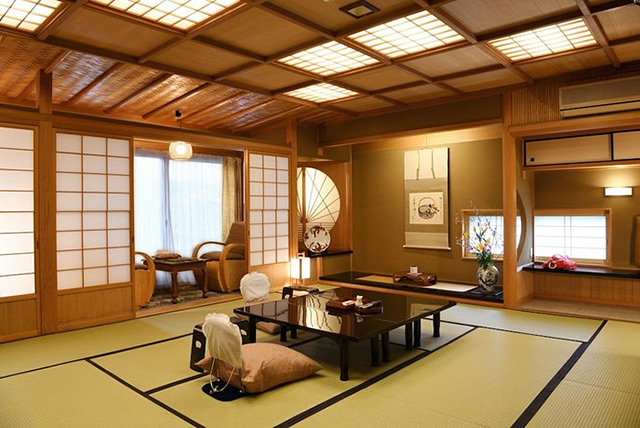 Top Stays in Ise and Toba >
Following the tradition (shikinen sengu) 16 out of the 125 structures must be rebuilt every 20 years on adjacent sites. The Uji bridge (Uji bashi) and torii gateway are also part of the reconstruction. They did this last shikinen sengu in 2013 for 62nd time and used during the project 12000 cypress logs. Some of the trees were older than 400 years and harvested in the Kiso Valley. Btw there are no nails used in rebuilding these structures. The architecture style of these shrines is known as shinmei-zukuri. It is a pure Japanese style without the influence from other parts of Asia. Ise-jingu is visited by approx. 7,5 million pilgrims and tourists every year. The Inner and Outer Shrine can only be accessed by the Emperor and high ranked Shinto priests.
Top Stays in Ise and Toba >
Following the tradition (shikinen sengu) 16 out of the 125 structures must be rebuilt every 20 years on adjacent sites. The Uji bridge (Uji bashi) and torii gateway are also part of the reconstruction. They did this last shikinen sengu in 2013 for 62nd time and used during the project 12000 cypress logs. Some of the trees were older than 400 years and harvested in the Kiso Valley. Btw there are no nails used in rebuilding these structures. The architecture style of these shrines is known as shinmei-zukuri. It is a pure Japanese style without the influence from other parts of Asia. Ise-jingu is visited by approx. 7,5 million pilgrims and tourists every year. The Inner and Outer Shrine can only be accessed by the Emperor and high ranked Shinto priests.
- Ise Shrine - Geku and Naiku:
- Opening Hours - 5:00 am to 6:00 pm – March and April, September and October
- Opening Hours - 4:00 am to 7:00 pm – May till August
- Opening Hours - 5:00 am to 5:00 pm – November and December
- Opening Hours - 5:00 am to 5:30 pm – January and February
- Admission Fee - free
My tips for local activities
How about exploring the city Ise and the Ise Grand Shrine on a personalized tour with a local guide? Check out this page > for more details.
History
Naiku (Inner Shrine) was founded about 2000 years ago. Geku (Outer Shrine) is dating back about 1500 years. The most sacred priestess there belong to the imperial family or their descendants. At the moment Takatsukasa Naotake is holding this position. In the beginning of the 7th century the tradition started to rebuilt the shrine every 20 years. The name of this ritual is shikinen sengu. It takes 8 years to complete this construction phase.
Location

Ise Shrine is located in Ise City in the Mie Prefecture at the Futami Bay.
Address: 1 Ujitachicho, Ise, Mie 516-0023, Japan
How to get to Ise Shrine?
- from Tokyo to Nagoya to Shima Peninsula
- 100min from Tokyo to Nagoya by JR Tokaido Shinkansen
- 80min from Nagoya to Ise-shi Station by Kintetsu limited express train
- 5min from Ise-shi Station to Naiku (Inner Shrine)
- 15min from Ise-shi Station to Geku (Outer Shrine) by bus
Sightseeing spots at Ise Shrine complex
Top:
Naiku (Inner Shrine) - It is the most sacred place in the Shinto religion and dedicated to the sun goddess (Amaterasu-Omikami). The Inner Shrine is made out of unpainted cypress wood (hinoki) and contains the Sacred Mirror (Yata no Kagami), which belongs to the Three Sacred Treasure of Japan (Sanshu no Jingi/Mikusa no Kamudakara). The other 2 are the sword Kusanagi no Tsurugi and the green jade jewel Yasakani no Magatama. The construction style is called yuiitsu shinmei-zukuri. The thatched roof is made out of kaya grass.
Geku (Outer Shrine) - Unfortunately not every structure is accessible by the public, but nevertheless it is a great place to discover the spiritual soul of Japan. The Outer Shrine is surrounded by a huge fence. It is dedicated to the kami of agriculture and industry (Toyouke-no-Omikami). The architectural style with the thatched roof is nearly identical to the Inner Shrine. Only the hall with the name Mikeden is a unique feature of the Outer Shrine.
Uji Bridge (Uji bashi) - Uji Bridge is called the gateway to the sacred world and is located at the entrance of Naiku (Inner Shrine) area. The famous sacred cypress bridge is 102m long and 8.2m wide. It spans the river Isuzugawa and at both ends are huge torii gates with a height of over 7m located. The river Isuzugawa is also used for purification and cleansing rituals. The bridge is a great example of Japanese craftsmanship and gets rebuilt every 20 years. More than six million visitors walking over this bridge every year.
Kodenchi - This is the former location of the old shrine and every 20 years this place will be used again.
Kaguraden - It is a hall for a personal prayer. A visitor can offer via kagura (ceremonial music and dance) a prayer to the goddess (kami) of the shrine.
Sengukan Museum - The museum gives you insight knowledge about the process of rebuilding the Outer Shrine.
Nearby:
Oharaimachi - After your tour through the Shinto complex it is time to relax and eat good food. Oharaimachi is a old shopping street with a nice square called Okage Yokocho.
Meoto Iwa - The famous weeded rocks are a must-see during your stay. read more
Festival & Events (dates can change without notice)
April
Kagura-sai (5th - 6th)
Spring Festival will be celebrated at Naiku, the Inner Shrine, with traditional dance and music performances. Enjoy also the beautiful flower arrangements.
July
Ise Jingu Hono Zenkoku Fireworks Festival (14th)
Amazing fireworks competition of artists from Japan. You will see app. 9000 fireworks shoot in the air to celebrate the transfer of the god body to the shrine in 1953.
September
Kagura-sai (22nd - 24th)
Autumn Festival will be celebrated at Naiku, the Inner Shrine, with sacred dance and music performances. Enjoy also the beautiful flower arrangements.
October
Ise Ō-Matsuri (5th till 6th)
This is the biggest festival in Ise. Enjoy the parades in the city.
Where to stay in Ise?
Hotels and Ryokans in Ise
Powered by Expedia
